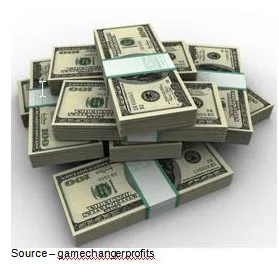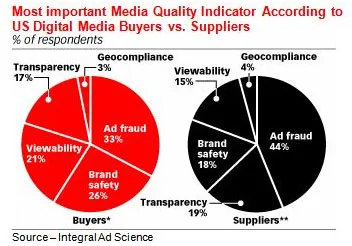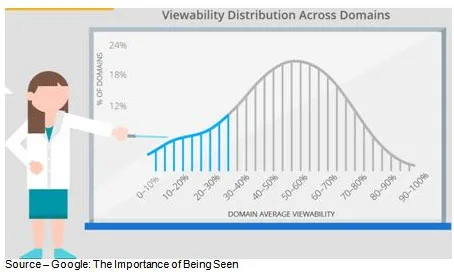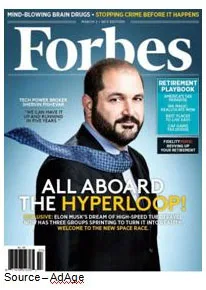With Marketing Challenges/Costs Rising, Companies Need to Focus

What’s all the hoopla over ad blockers?
We don’t need no stinkin’ ad blockers because marketing has become increasingly sophisticated with its personal marketing efforts where data scientific research and machine-learning tools guide the company’s messages to people who are most interested in your products/services.
And still:
- Ad blocker usage grew 90 percent last year
- By March PageFair reported 408M folks were using ad blockers by default
- 21 percent of the world’s 1.9B smartphones had them installed
At the same time, publishers and marketing folks are screaming bloody murder because they’re basing their ad sales/buys on CPM (cost per thousand) and GRP (gross rating points) and impressions.
No, they don’t really want to reach all those folks. Just the ones who are going to buy!
The rest?
Obviously, a total waste … until they see the errors of their ways.
We’re talking about personal marketing–you know, where it’s the customer and you (not you and the customer.) Few people recognize that the customer is the one who is really in control of the relationship.

Probably because management still bases their budget approvals on traditional marketing measurements – reach and frequency.
You know:
- How many people attend a conference, show, event
- How many people can possibly see the video ad
- How big is the audience
- Total number of Facebook, Instagram, Snapchat users, followers, re-tweeters
- How big is the direct response ad list
- How many answered to the call to action
Boy we just can’t seem to get our collective act together.
What companies/brands really want is to be a part of the consumers’ social circle because when you’re not, you’re nothing but an interruption.
Having a web presence, a social profile and blasting content through the channels doesn’t build the connection. Doesn’t build brand loyalty.
Your voice is lost in the cacophony of daily activity.
Face it, in today’s always-on world; it’s a lot of work to make your marketing message(s) relevant and welcome.
Maybe it’s a good thing the Web and social media are still part of the Wild West.
In the good old days, Google SEO (search engine optimization) was the only game in town and the rules followed the online architecture, activities.
No more.

We’ve gotten better with traffic laundering, clickbait and recommendation platforms–all those neat things that replace the creativity and the desire to satisfy, assist and reach specific potential customers.
I’m not one of those folks who say people hate ads.
What they dislike (hate is such a violent word) is irrelevant, mediocre, boring, lazy ads. You know:
- Stuff you’re not interested in and will probably never be interested in
- Ads that drone on and on about how good the whatever it’s talking about is when everyone should know it’s all about … me
So no, people don’t hate ads … they hate ads that don’t put the consumer experience first. You know … they suck!

The “good” news, according to Google’s Factors of Visibility, is that 56 percent of the impressions folks pay for are never seen.
That’s bad but it gets worse because most ad delivery systems use bots to automatically deliver the ads.
Everyone agrees and no one seems to be concerned about the fact that more than half of the traffic on the iNet is NHT (non-human traffic); and even though, according to the ANA (Association of National Advertisers), advertisers lost $6.3B last year to bots.
Throwing even more cold water on the proud numbers marketing likes to show senior management, Reid Tatoris, co-founder of Are You a Human, painted a bleaker ROI (return on investment) picture:
- Broken ads, technical glitches account for 15 percent of unseen ads
- 50 plus percent are traffic from bots
- 25 percent are fraud or NHT
So only about 8-10 percent of the ads even have a chance to be seen!
If the ads aren’t going to be creative and the chance of them being seen is below the waterline, there needs to be a better solution.
BAM!! It’s called native advertising. O.K., you used to know them as advertorials but native advertising sounds much more unsleezy.
They may look like regular articles, videos or infographics but you can “easily” recognize them because in ant-droppings size type it says advertising or sponsored content.
They work so well that Business Insider Intelligence estimates that native ad spend will grow to $21B by 2018.

AdAge said the barrier had been broken when Forbes slapped one on their cover, but they’ve been appearing at an increasing rate for years.
Folks like Buzzfee, Outbrain and Facebook have been running them for a long time.
It was such a good (read profitable) deal for the medium and the advertiser that media like USA Today, New York Times, Conde Nast, The Atlantic, Wall Street Journal have joined the fray for ad dollars.
Done well and they’ll be as credible as regular content; but that will require a ton of creativity and understanding of/focus on the consumer viewer/reader.
Done not so well and the recoil will hurt … a lot.
It just depends how much time and energy you want to commit to finding, nurturing and keeping customers.
 It’s not necessary but just remember what Carl Martin said, “You’re gonna pay for this, Randall, and the price is gonna be real high. I just wish I could do it slow.”
It’s not necessary but just remember what Carl Martin said, “You’re gonna pay for this, Randall, and the price is gonna be real high. I just wish I could do it slow.”
# # #